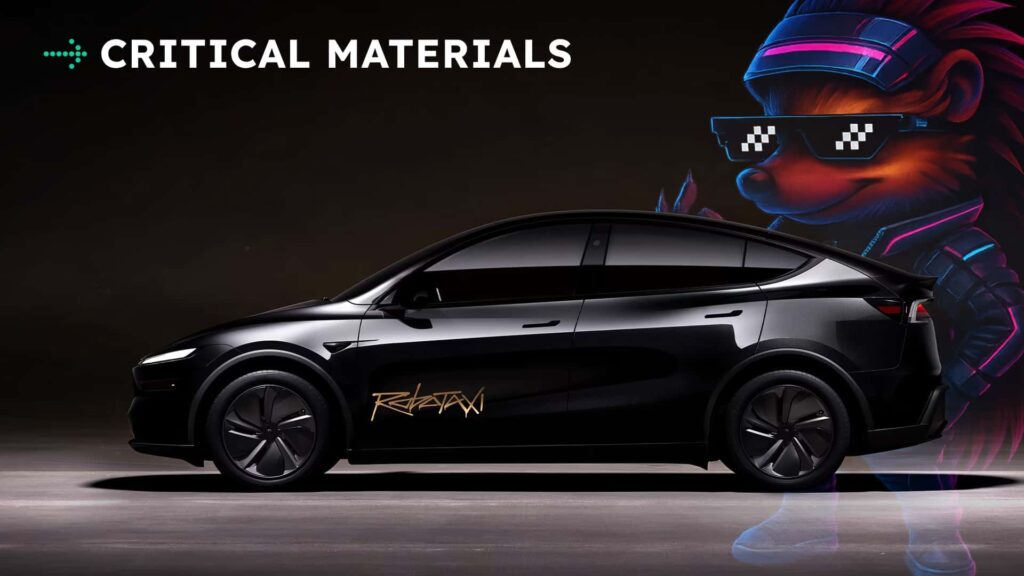It’s understandable that Tesla wants to protect its competitive edge and keep its proprietary information under wraps. However, when it comes to public safety and trust in autonomous vehicles, transparency is key. The public has a right to know how these vehicles operate, especially when they are being tested on public roads.
With the NHTSA investigation ongoing and concerns about the safety of Tesla’s self-driving technology, it is crucial that all relevant information is made available to the public. This will not only help build trust in autonomous vehicles but also ensure that any safety issues are addressed promptly.
As Tesla continues to push the boundaries of autonomous driving technology, it must also be willing to be transparent about its processes and safety measures. The future of transportation is exciting, but it must also be safe for all road users.
Stay tuned for more updates on Tesla’s Robotaxi deployment and the ongoing NHTSA investigation. Remember, when it comes to the future of transportation, safety should always come first.
That’s all for today’s edition of Critical Materials. Thanks for reading!
. Instead, it would require a filibuster-proof 60-vote majority, making it a much more challenging task. This is good news for the USPS and its commitment to modernizing its fleet and reducing its carbon footprint.
The pushback against the USPS’ EV plans highlights a broader issue in the transportation industry. As more companies and government agencies look to transition to electric vehicles, there will inevitably be resistance from those who are hesitant to embrace change. In this case, Senate Republicans are concerned about the costs associated with electrifying the USPS fleet and believe that the focus should be on delivering mail efficiently rather than achieving environmental goals.
However, the reality is that transitioning to electric vehicles is not just about being environmentally friendly. It’s also about long-term cost savings, improved efficiency, and reducing dependence on fossil fuels. The USPS recognizes these benefits and is committed to moving forward with its electrification plans, despite the challenges it may face.
If the USPS were to abandon its EV plans, it would not only waste taxpayer funding but also miss out on the opportunity to modernize its fleet and stay competitive in an increasingly electric vehicle-dominated market. It’s crucial for the USPS and other organizations to stay the course and continue investing in electric vehicles to ensure a sustainable and efficient future for transportation.
In conclusion, the USPS’ battle to keep its EV plans intact serves as a reminder of the challenges and resistance that the transition to electric vehicles may face. However, it’s essential to push through these obstacles and prioritize the long-term benefits of electrification. Without it, the success of electric vehicles, including Robotaxis, could be called into question, and the industry as a whole could suffer setbacks. It’s crucial for all stakeholders to work together to overcome these challenges and embrace the future of transportation.
It seems that the fate of the United States Postal Service’s (USPS) electric fleet hangs in the balance, as a recent decision requires a 60-vote supermajority in the Senate to force the sale of these vehicles. With Republicans currently holding a 53-47 majority in the Senate, this poses a significant challenge to any efforts to overturn the USPS’s plans for its electric fleet.
Elizabeth MacDonough, the Senate parliamentarian, made this ruling last week, stating that the Biden-era emission regulations could not be overturned without a similar supermajority vote. This decision has far-reaching implications for the future of the USPS’s electric fleet, as well as the broader push for environmental sustainability in the transportation sector.
USPS has been vocal about the importance of its electric fleet in replacing its aging and obsolete delivery vehicles. Scrapping these plans could “seriously cripple [its] ability to replace an aging and obsolete delivery fleet,” according to USPS officials. The USPS has already faced significant financial challenges, losing around $100 billion since 2007. Mandating the abandonment of its new electric vehicles could further strain its financial resources.
Fortunately, for now, the USPS electric fleet will be allowed to continue operating. However, the future remains uncertain as the debate over the fate of these vehicles continues in the Senate.
90%: China Opens The Dam, Begins Flooding Brazil With Cheap EVs
Meanwhile, in China, the electric vehicle market is facing a different set of challenges. With over 100 EV manufacturers vying for market share, the competition has become increasingly fierce. Some brands have resorted to tactics like forcing stock on dealers or selling new cars as used to boost sales and clear excess inventory.
To address the oversupply of vehicles, Chinese EV makers have found a new market in Brazil. By exporting their surplus stock to Brazil, these companies are able to offload their excess inventory and generate new sales opportunities in a different region.
One of the key players in this strategy is BYD, the world’s leading producer of electric and plug-in hybrid cars. Chinese-built vehicle imports to Brazil are expected to increase by nearly 40 percent this year, reaching approximately 200,000 units. While this has provided Brazilian consumers with access to affordable electric vehicles, it has raised concerns among local automakers, union leaders, and government officials.
Industry and labor groups in Brazil have criticized China for taking advantage of the country’s low tariff barriers to ramp up exports without investing in local production. They are calling on the Brazilian government to increase tariffs on all EV imports to protect domestic manufacturers and create local jobs.
While consumers may benefit from the influx of cheap Chinese EVs, the situation has sparked a debate about the long-term impact on Brazil’s automotive industry. As Chinese manufacturers seek to expand their market share in Brazil, tensions are rising among key stakeholders in the country’s automotive sector.
Ultimately, the decision to flood Brazil with cheap EVs highlights the complex dynamics of the global automotive industry and the challenges faced by both domestic and international players. As the competition intensifies, countries like Brazil will need to carefully navigate the balance between promoting economic growth and protecting their local industries.
However, as the industry shifts towards electrification and autonomy, there is a growing trend of automakers wanting to keep safety data secret. This raises the question – should automakers be able to keep safety data confidential?
Transparency is key in building consumer trust, especially when it comes to new and emerging technologies like electric vehicles and autonomous driving. Safety data is crucial for consumers to make informed decisions about the vehicles they choose to drive. By withholding this information, automakers risk eroding trust and credibility with their customers.
While some automakers argue that keeping safety data confidential is necessary to protect their competitive advantage, others believe that transparency is paramount in building a sustainable and trustworthy brand. Ultimately, the fate of the factory and the future of the auto industry as a whole may depend on how automakers choose to navigate this delicate balance between secrecy and transparency.
As Chinese EV makers flood into Brazil and the threat of overcapacity looms over the industry, it is more important than ever for automakers to be open and honest with their customers. The fate of the factory may be uncertain, but one thing is clear – transparency is key to building a successful and sustainable future for the auto industry.

